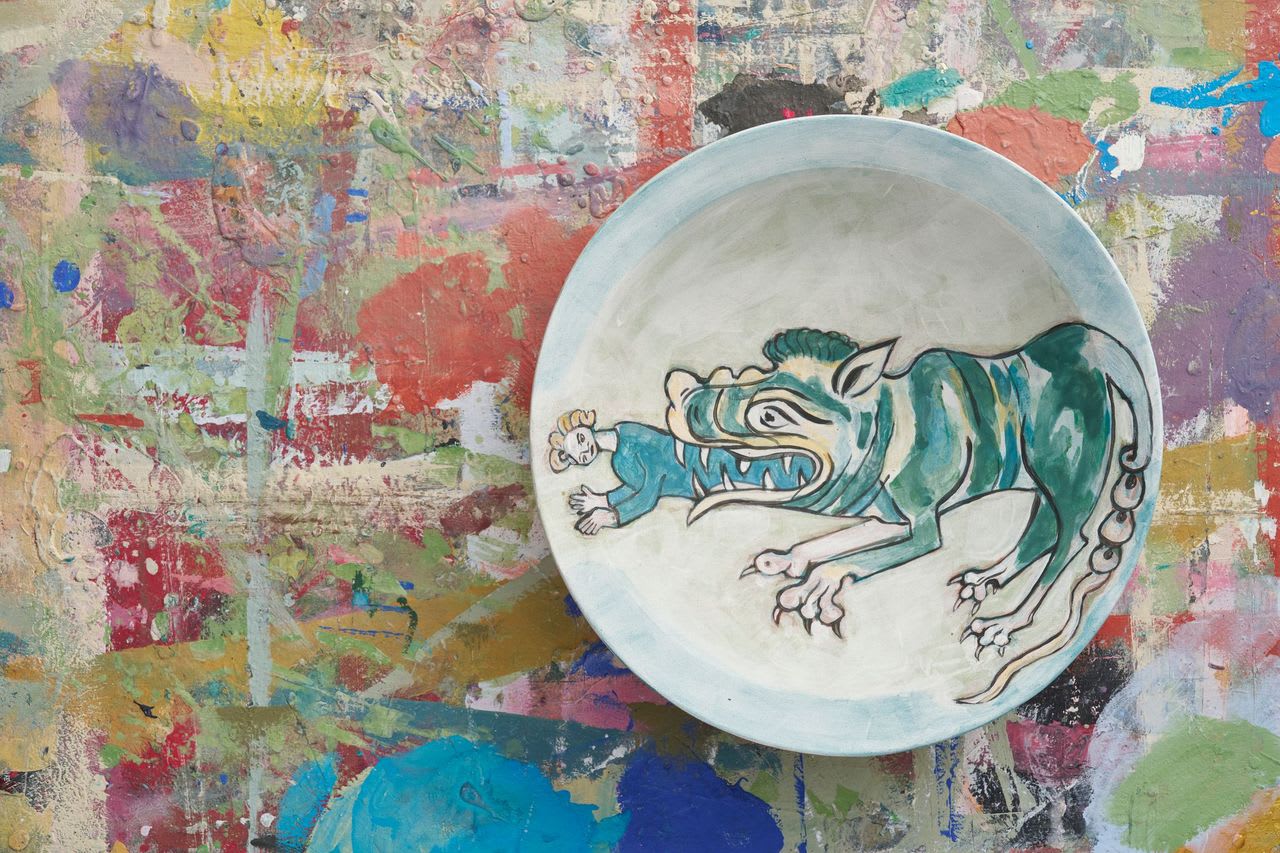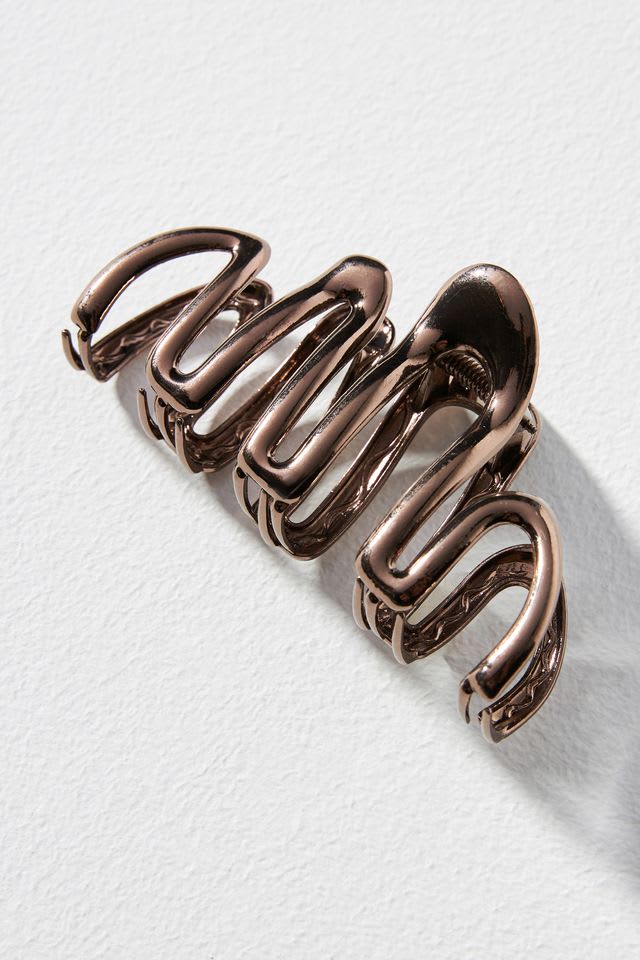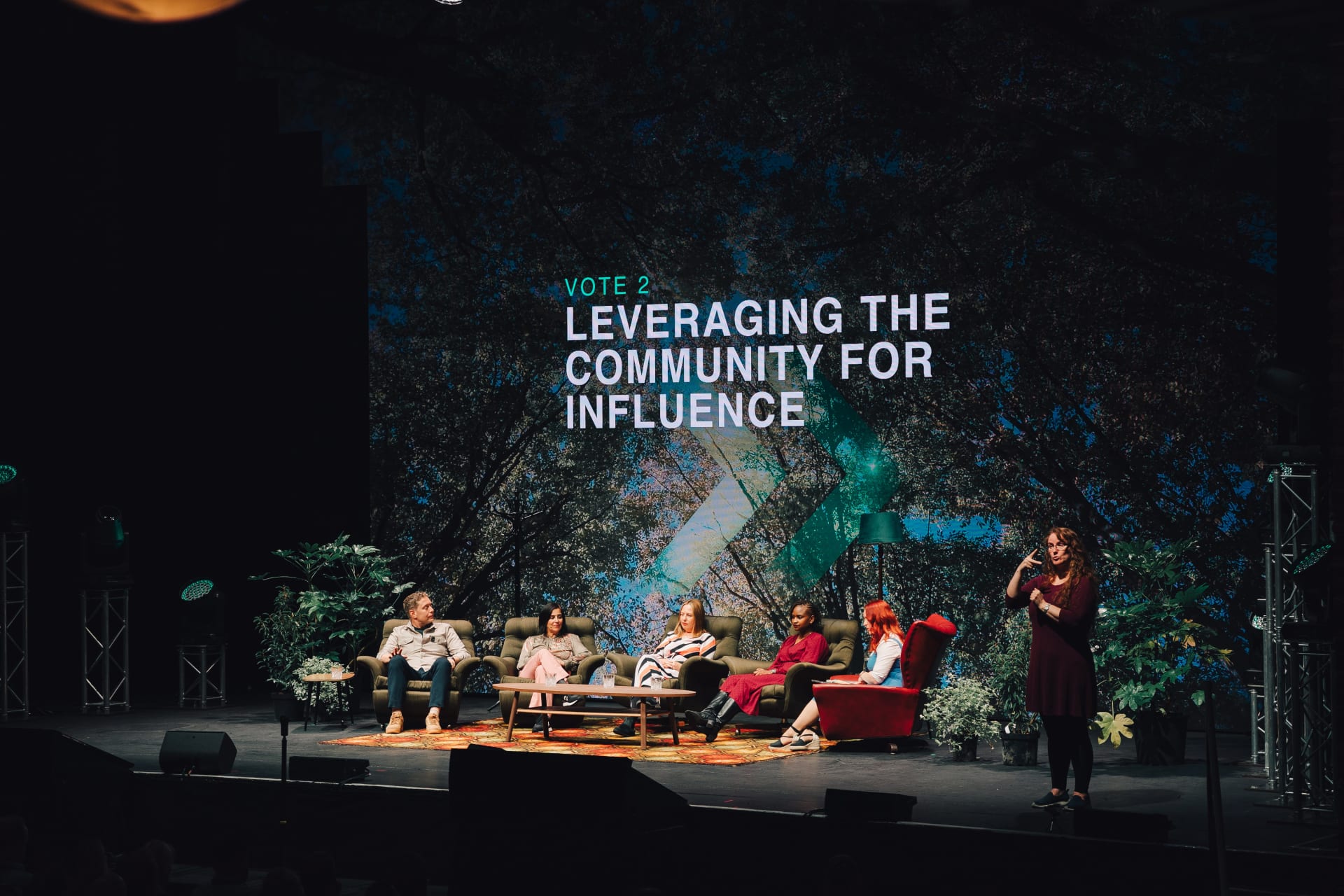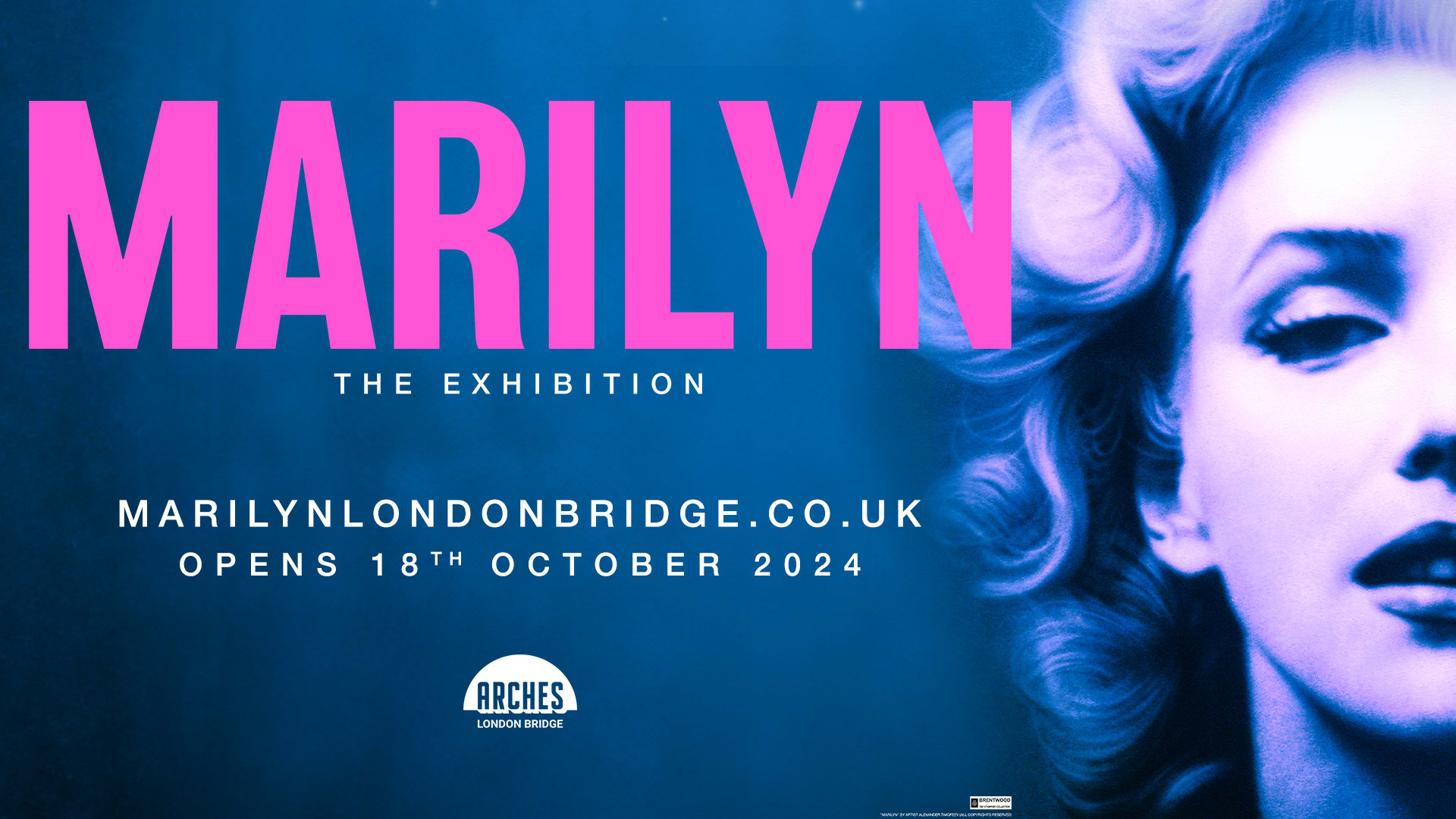This month, the Bodleian Libraries are thrilled to present an exhibition of works by esteemed artist, colour expert and leader in the field of design, Annie Sloan CBE. This collection of new art, on show as part of this year’s Oxfordshire Artweeks festival (venue 244), is inspired by the beauty, stories and humour Annie found within the library’s special collection of bestiaries.
The Bodleian Library is the main research library of the University of Oxford and is one of the oldest libraries in Europe. It derives its name from its founder, Sir Thomas Bodley and is affectionally known to Oxford scholars as ‘the Bodley’ or ‘the Bod’. The library holds a highly important collection of manuscripts from medieval Europe and the Byzantine Empire, second only to the British Library in the UK, and this is where Annie headed for inspiration.
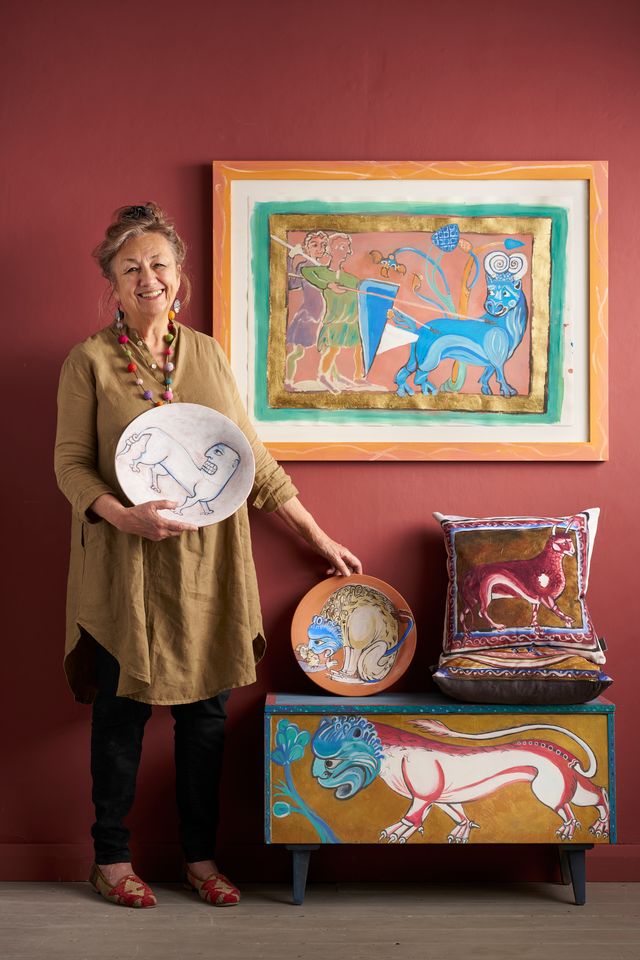
Annie Sloan CBE has been described as one of ‘Britain’s most influential female designers’. Having originally trained as a fine artist she turned to decorative work and went on to publish The Complete Book of Decorative Paint Techniques in 1988. Two years later, she invented her revolutionary, Chalk Paint™. Since then, she has published 26 books on paint effects and interior design and is widely considered one of the world’s leading authorities on paint, colour and style. Her Chalk Paint is sold across the world and Annie is known as the ‘Queen of Upcycling’.
Along with many artists, Annie has always been fascinated by the incredible beauty of medieval illuminated manuscripts, and this love of medieval art was reignited by her recent studies of the bestiaries in the Bodleian Library’s Medieval Collection. These beautifully illustrated volumes of beasts were made popular in the Middle Ages, describing not only the natural history of the animals but also conveying moral lessons on human virtues and vices through the symbolism attached to each beast.
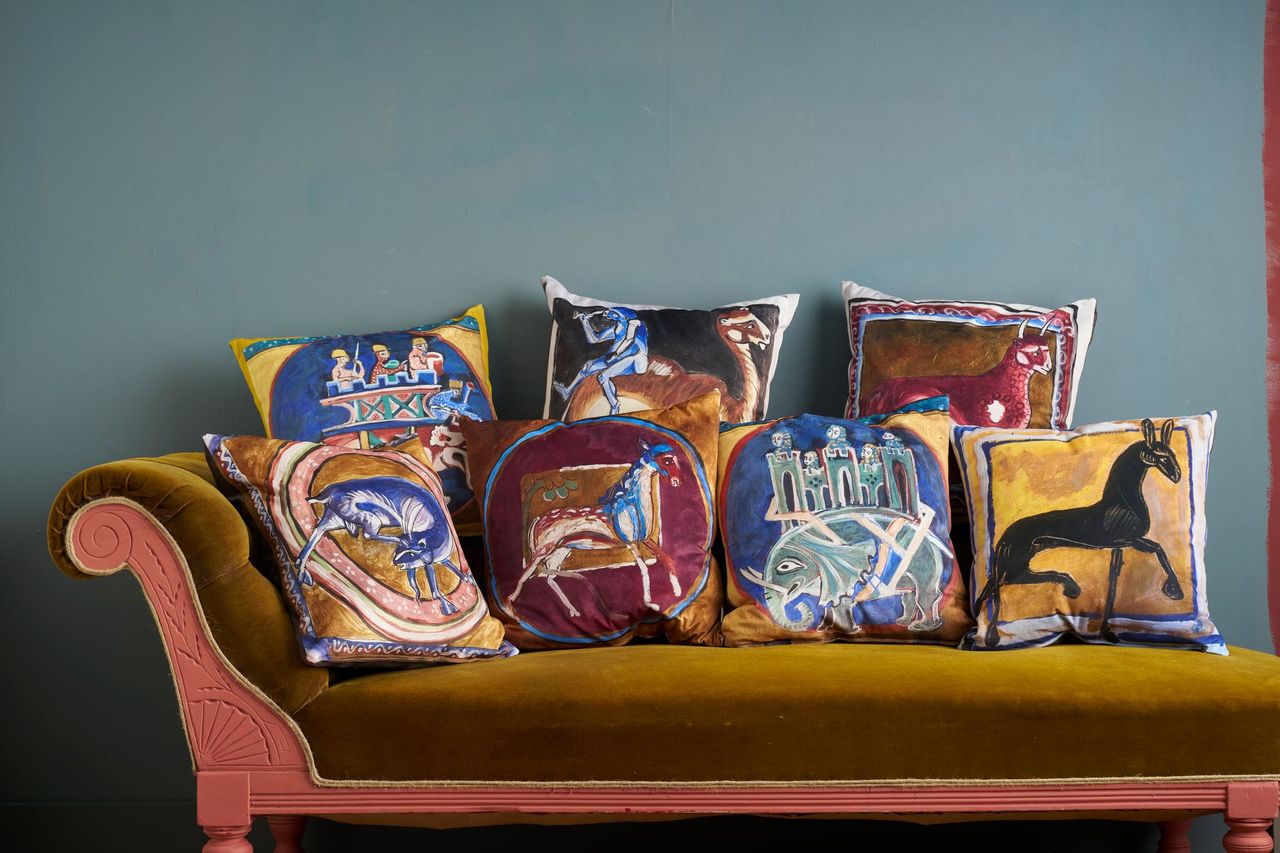
“I’m fascinated by the idea of Oxford as a medieval city, and I love medieval art because it has a directness you don’t see in classical art,” says Annie. “There’s tremendous magic and excitement in the treasures of the Bodleian Libraries, including wonderful bestiaries, big leather-bound illustrated books with vellum pages and delightful paintings. These pictures were particularly important when people didn’t read: because all the text was written in Latin. I don’t read Latin either, it was as if I was seeing the pages through illiterate medieval eyes, having to rely solely on the pictures (or a priest from the Middle Ages to act as a translator and to explain the iconography of the different animals). I felt like I was looking at the earliest graphic novels.
The bestiaries include some scenes like huntsmen and stags, whales eating people, someone milking a cow, and cats killing rats: these give an insight into the lives and sensibilities of the time. Animals were very much a part of medieval life in which people were farmers and shared their houses with their livestock. Seeing the truths of the natural world and the rawness of life, people living on the land had a non-sentimental attitude to animals which I can appreciate as a farmer’s daughter.
Despite this, the illustrations had a real warmth to them. The animals are mostly sweet-faced and some are quite comical. There are dragons and mythical creatures, big cats and lovely elephants: some of the drawings were hilarious because they looked as if one person has described an elephant – for example, ‘big feet and curly-edged ears’ – and then another has drawn it, so the legs and ears and scale are all wrong. They feel fantastical and I have drawn on that.
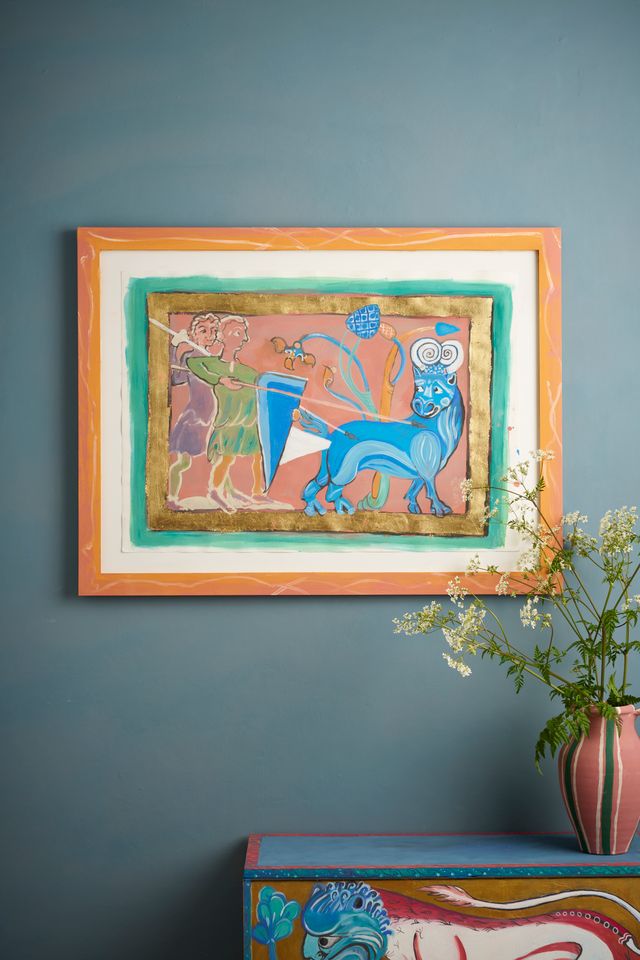
I love the idea that these animals were to teach people how to behave and, as I looked, I invented the stories the picture might be illustrating. One reoccurring image shows a monkey looking backwards as he rides on a camel. The camel looks like a hard-working beast of burden while the monkey on his back is cheeky and lascivious: it’s fun to ponder their narrative.”
Annie’s own interpretations of the Bodleian’s medieval beasts are loose and playful. Making them larger and more expressive, she brings them to life, ‘setting them free to wander the world’ and connect with people far beyond the gargoyles and grotesques that line the roofs of Oxford’s historic buildings.
During Artweeks, the collection on display and available for sale in the Bodleian Library shops in the Old Quad and the Weston Library will include a selection of framed paintings, one-off cushions with printed designs, and a series of hand-painted plates which also draw on the designs of pre-Raphaelite potter William De Morgan whose lustre-ware was influenced by medieval art. The plates themselves, in terracotta, were hand-thrown by Oxfordshire potter Graham Hudson. Annie then painted onto them directly with glaze which was then fired. “I have never painted pottery before, so that was a new experience for me,” she says.
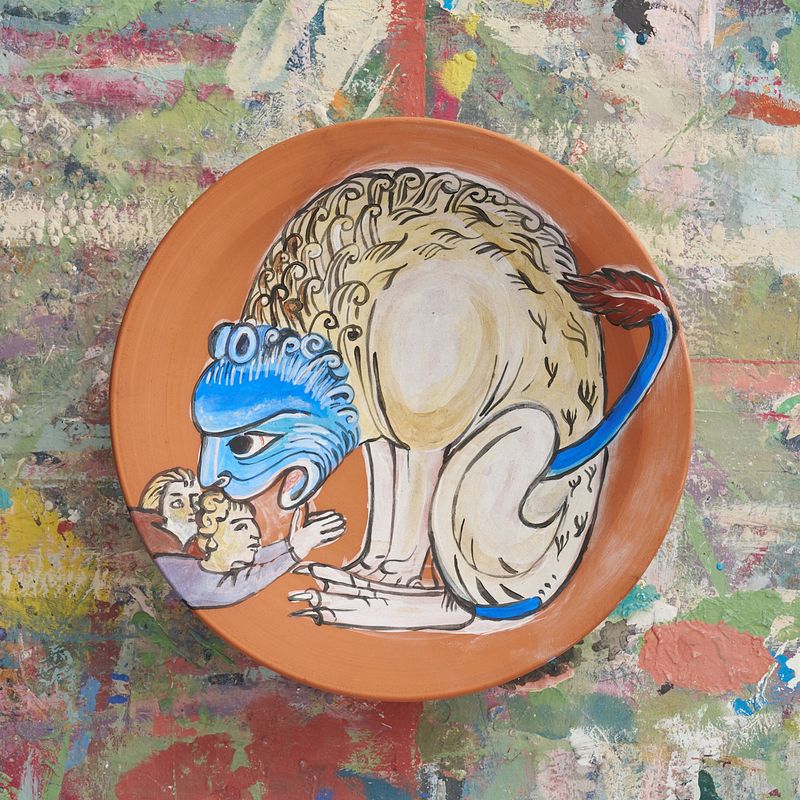
For the other pieces in the collection, Anne has used her own Chalk Paint – picking a core palette inspired by the richness and brightness of the medieval illustrations she discovered in the library. These include Oxford Navy, Napoleonic Blue and Frida Blue (inspired by Frida Kahlo's ‘Casa Azul’ in Mexico City); Florence (a sophisticated teal); Graphite and Athenian Black, Burgundy and a spicy warm shade Paprika Red, one of Annie’s latest releases. These she teamed with luscious gold leaf to add a touch of magic to these bestiary-inspired works.
Also on show, look out for a blue-headed lion-esque beast, and elephants and soldiers (based on the traditional Elephant and Castle logo) on a small wooden mid-century chest on legs. Despite its modern lines this piece of furniture is upcycled. Annie designed her Chalk Paint to be used by anyone can revamp their dresser or old chests-of-drawers and save them from landfill. Moreover, to accompany the exhibition, Annie is creating a ‘paint your own keepsake box’ which can be decorated with a curated choice of paints in medieval hues, wax and metal leaf so that visitors who have enjoyed the show can create their own designs at home.
For more information on Annie Sloan, visit anniesloan.com
For details of this and other Artweeks venues, visit artweeks.org

